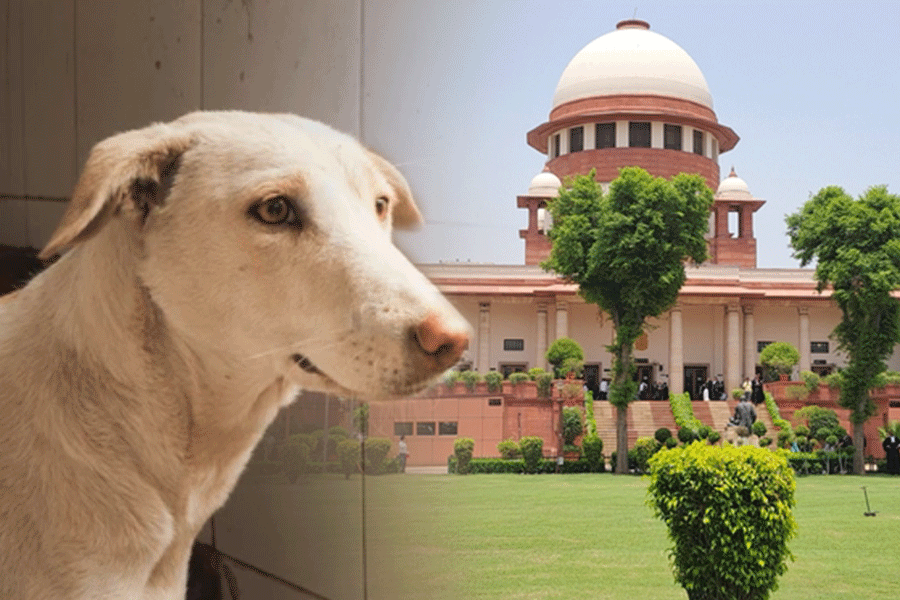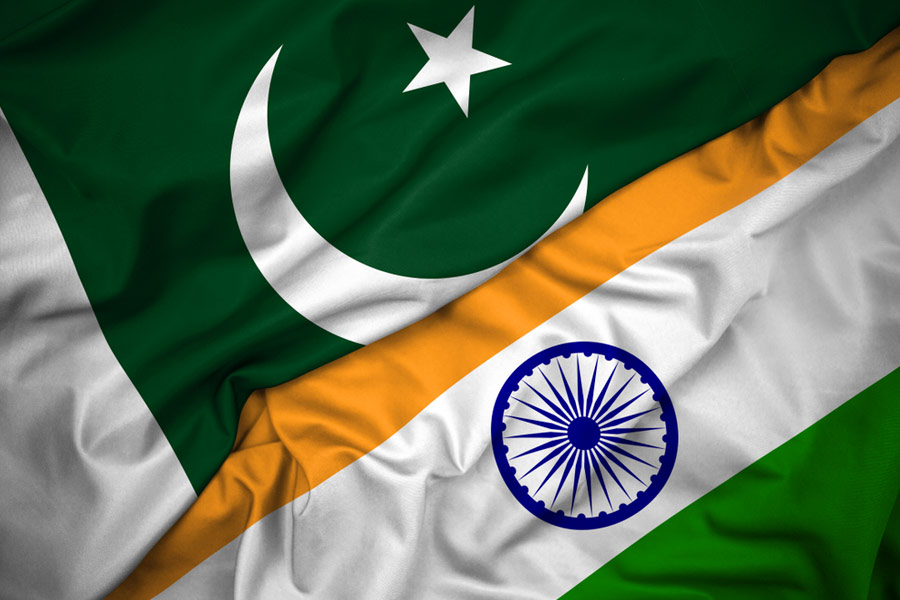 |
Panagarh, 165km southeast of Calcutta, became the hottest place recorded in India on Monday during a particular time window, hitting 46.5° C. But the statistical pinnacle shifts day after day: on Tuesday, Chandaboli, a town 50km from Bhadrak in coastal Odisha, had the highest recorded temperature in the country at 47.2° C.
The Tropic of Cancer runs through Trilokchandrapur, 7km from Panagarh and known for extreme temperatures. The Telegraph had published a report on January 2 on life in Trilokchandrapur at 5° C. The same reporter returned to the same village on Wednesday to report on life at over 45° C.
Something is missing in Panagarh after the mercury shot up. The gateway to Panagarh for long has been columns of goods vehicles that seemed installed permanently on Grand Trunk Road to make the entry of other vehicles impossible. The heat appears to have melted the trucks away.
A bus stands forlorn about 30km from Panagarh as one approaches from the direction of Calcutta. The remains of one of its tyres lie on the highway. It has been shredded by the heat.
The heat seems to have evaporated people from the road, too. GT Road looks desolate at 11am. A woman rides a bicycle, holding an umbrella in one hand, and wearing a cap, sunglasses and a piece of cloth tied like a mask that only leaves the eyes out. Minati De, who works at a tailoring shop, says she travels like this every day.
Panagarh, of the military bases, has one claim to fame: the Tropic of Cancer runs through the village Trilokchandrapur. In winter, Trilokchandrapur had recorded 5°C.
In the villages, the actual figures are something of a joke invented by reporters. Winter and summer are almost the same, driving the inhabitants into similar, truncated sub-human days, coercing the workday into a few hours. The protection against the sun and the cold is often the same piece of cloth.
In Trilokchandrapur, Behula Ruidas, who had spoken to this newspaper last winter, is wearing the same sari on Wednesday morning. She quickly changes into the other one she has for the benefit of a new photograph.
She has been working since six in the morning, like most of her neighbours, under the 100-day scheme, digging for a pond. The work gets over by 11 as, by then, it is impossible to stay outside and she has to come home and cook and do all her household chores before the men want lunch.
By then, it is impossible to stay inside. There’s no breeze to rustle through the leaves, no shade that brings comfort, only heat steaming out of everywhere and filling everything.
“I don’t feel like eating. I have stomach cramps every day,” says Behula. She is stressed also because in a few days, she will move into her new dochala (hut), the construction of which she is personally overseeing. “I had to borrow money for this. It cost me around Rs 6,000. But my husband is abusive. I will look after my family and cook for him but live alone,” she says.
She conducts a tour around the village. Many of her neighbours are her relatives. All of them have the same work under the 100-day scheme now. The women are back in their homes; the men, though, are not so much to be seen. The front of Mamata Ruidas’s hut is full of children. School opened on Monday, but has been closed again as it was not possible for the children and teachers to reach the school in the heat.
But no school doesn’t mean all play. “The grass has turned white,” says a boy. “We only play after sundown.”
The only relief is the pond. Children as well as adults jump into the ponds, of which there are several in the village. Where the new pond is being dug, small girls wade through muddy water collecting shrimps.
But water is scarce. “We are not able to pump tubewell water. Even the wells are drying up,” says Swadesh Saha, a student of Bolepur College.
The 100-day work pays Rs 136 per day. So some, such as Tapas Rajbangshimal, want to stretch the day a bit and try construction. “I fell ill. Many had diarrhoea.”
Many chickens died in the village poultry, says Madan Ruidas. It is more than the usual summer this year.
In Panagarh town, the Station Road market remains bustling. Several shops have stocked up on table and pedestal fans. “We are selling 20 to 30 pieces per day,” says the owner of Beauty Stores. Other kinds of ware are not selling much.
Pawan Agarwal, who owns the only air-conditioned sari shop in the market, has the same complaint.
But Hind Bastralaya, which did some brisk business selling imported woollens last winter, is happily stocking up on heavily embroidered lehenga cholis. Its clients have urban tastes, from the military bases and neighbouring towns.
Certain things are beyond seasons.










